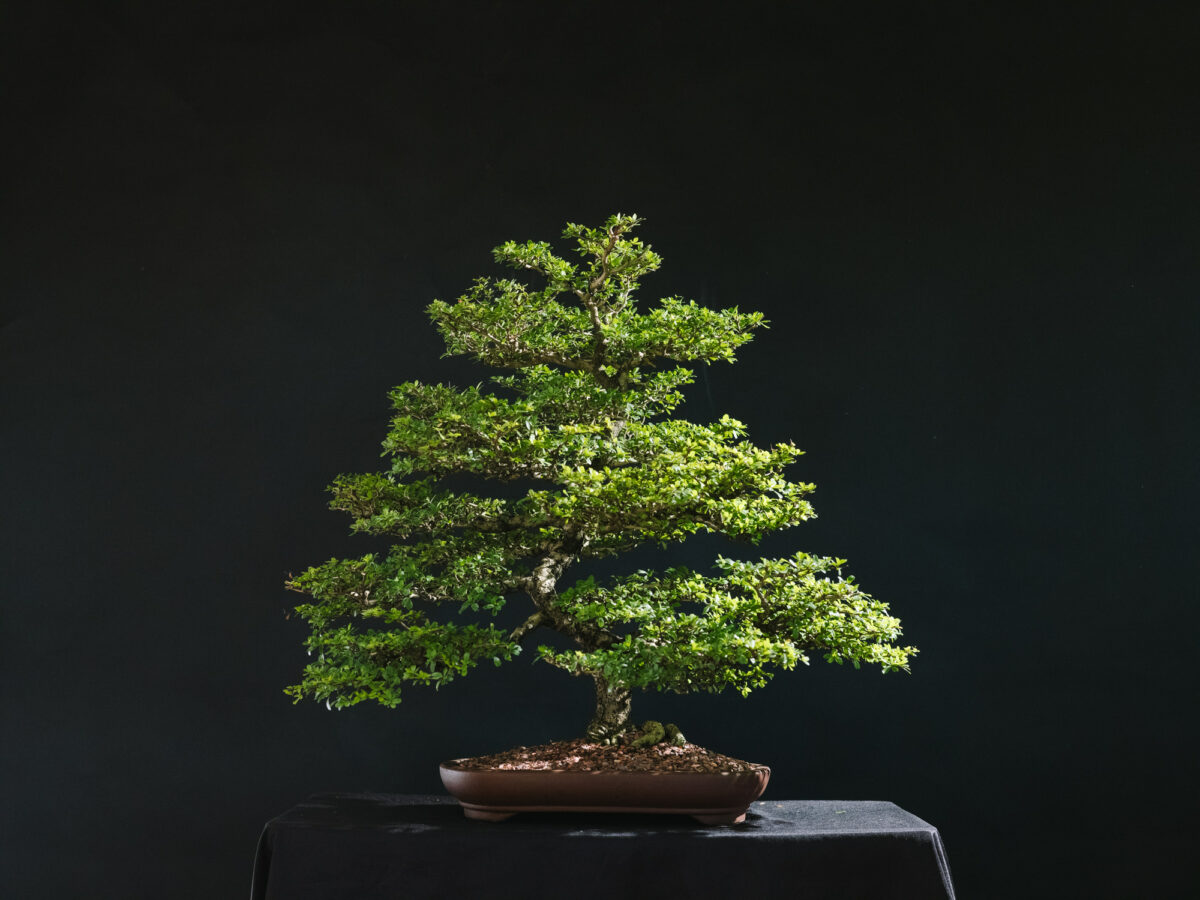Common Name: Dwarf Black Olive
Scientific Name: Bucida spinosa
Characteristics
- Bark – light to dark brown in color / slightly textured - can become fissured with age
- Branches – brittle / zigzag like pattern / thorns
- Leaves – alternate / obovate / simple / light to medium green
- Flowers – very small / yellow / fragrant
- Fruit – round brownish-black spikes / not edible
Growing Conditions
- Air – good air circulation / humid environment
- Sun – morning to midday sun is best / good sun promotes smaller leaves
- Water – moist not wet - dry down not dry out / morning to midday is best / new leaves increase transpiration
Maintenance
- Roots – Repotting is best when night temperatures are consistently above 70 degrees. Not a prolific root producer so care should be taken to reduce the root ball and/or large roots with care over time. Well-draining soil. Protect from sun for 2 weeks after root pruning.
- Trunk – Properly clean and protect large cuts from moisture as cuts can be slow to heal. Watch for wire scarring. Healthy trees can be heavily reduced.
- Branches – Branches become more brittle and difficult to bend with age. Use wire to set initial primary and/or secondary branch structure where applicable. Watch for wire scarring. The clip-n-grow technique is well utilized with the natural zigzag pattern and helps to maintain a cohesive design. Properly clean and protect large cuts from moisture. Healthy trees can be heavily pruned. Protect from sun for 2 weeks after heavy branch pruning. *Watch for water sprouts to prevent unnecessary wounds.
- Leaves / Flowers – Defoliation is not necessary. Partial defoliation during the growing season can increase airflow, visual design, and reduce predatory insects and fungus. Watch for insects and related fungus on flowers and new stem growth.
Hardiness: tropical evergreen / zone 10 - 11 / protect below 45 degrees
Propagation: Typically grown from seed. Cuttings and air-layers are rarely reliable. Night temperatures must be consistently over 70 degrees for any chance of success.
Potential Issues
- Insects – aphids / bark borers
- Fungus – sooty mold on leaves and branches caused by aphids /root fungus can occur because of poor soil or drainage.
Additional varieties used in bonsai: Black Olive - Bucida buceras | Weeping ‘Shady Lady’ – Bucida buceras
*NOTES – Outside Only. Can self-defoliate for 2-3 weeks as it transitions from winter to spring. Native to the Caribbean and naturalized to South Florida. Is not an actual Olive.



